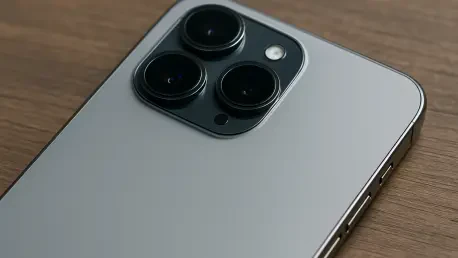Imagine capturing a distant landscape with such clarity that every blade of grass seems within reach, or snapping a portrait that rivals professional studio shots—all from a device in your pocket. Smartphone cameras have become a battleground for innovation, and the leaked specs of two upcoming flagships, the OnePlus 15 and Realme GT 8 Pro, have set the tech world abuzz. With releases slated for later this month in China, these devices promise to redefine flagship photography. This roundup gathers insights, opinions, and analyses from various industry sources to dissect what these leaks mean for consumers and the competitive market.
The stakes couldn’t be higher in an era where a smartphone’s camera often dictates its appeal. Industry watchers note that camera specs are no longer just features but pivotal selling points that can make or break a device’s reputation. As anticipation builds, this article aims to compile diverse perspectives on how these two brands under the BBK Electronics umbrella are shaping their photography strategies.
Differing views on these leaks have emerged, with some seeing bold innovation and others spotting potential pitfalls. By exploring a range of opinions, this piece seeks to offer a balanced look at what the OnePlus 15 and Realme GT 8 Pro might bring to the table, helping enthusiasts and buyers alike navigate the hype.
Diverse Opinions on Camera Innovations and Trade-Offs
OnePlus 15: A Puzzling Downgrade in Sensor Size?
The leaked camera specs for the OnePlus 15 have sparked debate among tech analysts, with a reported shift to a 1/1.5″ Sony Lytia LYT-700 main sensor, smaller than the 1/1.43″ sensor in its predecessor. Additional details point to a periscope telephoto with a 1/2.76″ Samsung ISOCELL JN5 sensor and a similar downgrade in the ultrawide module. Many industry commentators view this as a surprising step back for a brand known for pushing hardware boundaries.
Some sources argue that this reduction in sensor size, coupled with a rumored drop to a “1.5K” display resolution, suggests cost-cutting measures. Analysts speculate that OnePlus might be redirecting resources to other areas like software optimization or battery life. However, this perspective isn’t universal, as a few observers caution that smaller sensors could compromise low-light performance and overall image quality.
A contrasting opinion highlights that hardware isn’t the sole determinant of camera prowess. Certain tech blogs emphasize that OnePlus’s partnership with Hasselblad for color tuning and image processing might offset these spec reductions. The question remains whether such software enhancements can truly compensate for the apparent hardware retreat in a market obsessed with cutting-edge specs.
Realme GT 8 Pro: A Telephoto Titan in the Making?
On the flip side, the Realme GT 8 Pro has generated excitement with leaks revealing a staggering 200 MP periscope telephoto camera featuring a 1/1.56″ Samsung ISOCELL HP5 sensor. Tech reviewers across platforms have hailed this as a bold move, especially for a brand that hasn’t historically prioritized camera hardware. This leap in telephoto capability could position Realme as a serious contender in flagship photography.
Several industry voices suggest that this focus on zoom technology taps into a growing consumer demand for versatile long-range shooting. Photography-focused forums note that such a high-resolution telephoto sensor could deliver unprecedented detail, ideal for wildlife or event photography. Yet, there’s a lingering concern about whether this emphasis might unbalance the overall camera system if other lenses underperform.
A more cautious take comes from market analysts who warn that Realme’s gamble could backfire if the supporting software fails to handle such a powerful sensor. Discussions on tech podcasts point out that without robust image stabilization and processing, high MP counts might result in noise or sluggish performance. This diversity of thought underscores the high stakes of Realme’s ambitious approach.
Common Ground: Sony Lytia LYT-700 as an Industry Benchmark
Both devices reportedly share the 1/1.5″ Sony Lytia LYT-700 sensor for their main cameras, a detail that has caught the attention of hardware enthusiasts. Many in the tech community see this as a sign of convergence among BBK Electronics brands toward reliable, high-performing sensors for primary imaging. This shared choice is often praised as a smart move to ensure consistent baseline quality.
Some industry insiders argue that adopting a common sensor reflects a broader trend of standardization in smartphone photography, allowing brands to focus innovation elsewhere. Reviewers on popular tech channels suggest that this sensor offers a strong foundation, balancing detail and low-light capabilities, which could appeal to a wide range of users.
However, not all feedback is positive, as certain critics question whether this reliance on identical tech limits creativity. Online discussions among camera buffs reveal a split, with some feeling that flagship devices should push unique hardware boundaries rather than settle on shared components. This debate highlights a tension between consistency and differentiation in today’s market.
Strategic Split: Divergent Paths Under One Roof
Despite their shared parent company, BBK Electronics, the two brands appear to target distinct priorities, with Realme chasing telephoto excellence and OnePlus seemingly scaling back on camera hardware. Market strategists have noted that this divergence mirrors a common tactic among sibling brands to capture varied consumer demographics. Such differentiation is often seen as a strength in expanding overall market share.
Tech columnists point out that Realme’s aggressive push into zoom capabilities might attract photography enthusiasts or younger users seeking standout features. Meanwhile, opinions on OnePlus’s strategy vary, with some suggesting that a more conservative approach could appeal to buyers prioritizing value over top-tier specs. This split sparks curiosity about how each brand will position itself in marketing campaigns.
A less discussed angle comes from business analysts who ponder if this fragmented focus risks diluting brand identity within the BBK portfolio. Forums dedicated to smartphone trends reveal mixed sentiments, with some users appreciating the variety and others feeling confused by inconsistent messaging. This strategic split remains a hot topic as the launch approaches.
Key Takeaways from the Camera Spec Debate
Sifting through the myriad perspectives, a few critical points emerge about these upcoming flagships. The Realme GT 8 Pro stands out with its audacious 200 MP telephoto sensor, earning praise for innovation but raising questions about balance. Conversely, the OnePlus 15’s apparent step back in sensor size and display resolution has puzzled many, though some defend it as a pragmatic trade-off for other potential strengths.
Analysts and enthusiasts alike stress the importance of real-world testing once these devices hit the market. Reviews and user feedback will be crucial to determine if the leaked specs translate into meaningful photography advantages or reveal unexpected shortcomings. Tech communities online are already buzzing with plans for side-by-side comparisons to settle the debate.
Another recurring theme is the influence of shared technology, like the Sony Lytia LYT-700 sensor, on competition dynamics. Opinions vary on whether this standardization benefits consumers by ensuring quality or stifles the kind of bold experimentation that drives the industry forward. These discussions paint a nuanced picture of flagship strategies in flux.
Reflecting on the Broader Smartphone Photography Landscape
Looking back, the roundup of opinions on the leaked camera specs for the OnePlus 15 and Realme GT 8 Pro paints a vivid contrast of ambition and caution in flagship design. Experts and enthusiasts dissected Realme’s daring telephoto upgrade alongside OnePlus’s unexpected hardware reductions, revealing a complex interplay of innovation and compromise. The diversity of thought captured how deeply camera technology shapes brand perception in this competitive space.
Moving forward, consumers are encouraged to dive into hands-on reviews and detailed comparisons post-launch to make informed choices. Exploring community forums and tech channels for user-generated content can offer practical insights beyond the hype. Additionally, keeping an eye on how software updates refine camera performance over time could prove vital, as raw specs only tell part of the story.
As the smartphone photography wars continue to evolve, staying updated on emerging trends and rival releases will help in understanding where these devices truly stand. Consider evaluating personal photography needs—whether zoom, low-light capability, or overall balance matters most—when weighing these flagships against alternatives. This approach ensures decisions align with real-world usage rather than just leaked numbers.









